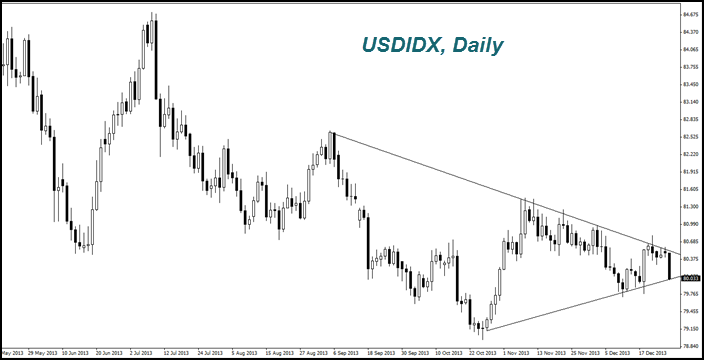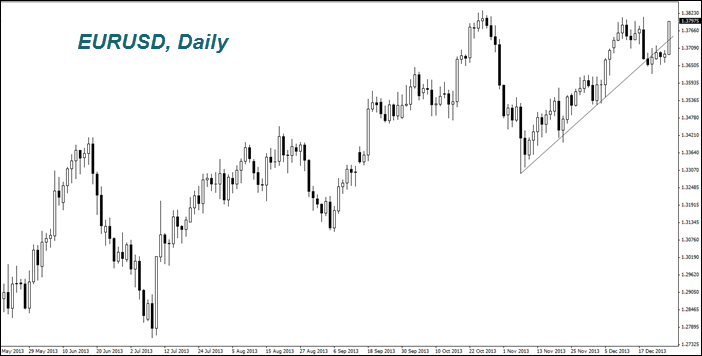On Thursday the
US index has fallen contrary to the positive macroeconomic data – the jobless claims indicator turned out to be lower then forecasted value. We suppose that a strengthening of European currencies has influenced dollar most of all.
An increasing British currency has led to the
EURUSD pair strengthening. Market participants expect a softening of the EU monetary policy. However that’s only rumor – we don’t expect that EU central bank will raise the basic rate until a stable economic growth stage begins. Meanwhile annualized US GDP has increased by 1.9% in the third quarter.


| UK | EU |
| Basic rate | 0,5 | 0,25 |
| Inflation – November value (y/y) | 2,1 | 0,9 |
|
GDP growth (y/y) - third quarter | 1,9% | -0,4% |
| Annualized currency strengthening (USD expression) | 2,5% | 5,2% |
It should be noted that unlike U.S. Fed and Bank of Japan, European Central Bank doesn't make redemption of government bonds due to large-scale monetary emission. The Bank of England has already completed the "quantitative easing." It also supports the exchange rate of native currency.
Nevertheless, we believe that a medium-term trend of the U.S. dollar strengthening may continue. In the conditions of inactive, holiday trade it is difficult to consider the rate of European currencies raise.
A weakening of the Japanese yen (
USDJPY) lasts for nine weeks for the first time since 1974. Today its course exceeded a mark of 105 yens for dollar for the first time since October, 2008. This was promoted by macroeconomic data for core consumer prices. In November, the falling rate has reached maximum in the last five years - 1.2%.










